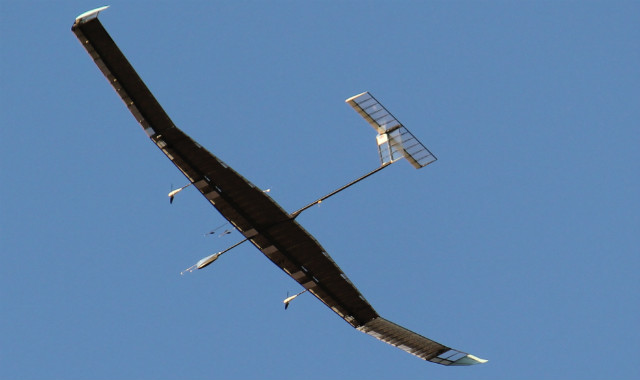Airbus Defence & Space has begun developing a next-generation version of its long-endurance Zephyr platform, with the design to feature an increased 35m (115ft) wingspan and, at 40kg (88lb), a heftier payload capacity.
No additional details have been released by the company about the “Gen 2” system, but it will build on its past experience with developing and flying a range of air vehicles for a combined 900h over the last several years.

Airbus Defence & Space
Dubbed a high-altitude pseudo satellite, the Zephyr is designed to perform persistent surveillance or communications relay tasks from an altitude of 70,000ft. Its longest flight to date lasted for two weeks, but Airbus says it is capable of remaining airborne for three months, using solar panels to charge its lithium sulphur batteries.
Next year will see the first flight of a Zephyr 8 version of the aircraft, which has a slightly larger fuselage but retains the Zephyr 7’s 25m wingspan, and weighs around 40% less than its predecessor’s 55kg, including a 5kg payload.

Airbus Defence & Space
A first example has been built in Farnborough, in the UK, and has already undergone pre-load tests (above) ahead of its 2016 flight debut, says head of business development Steve Whitby. Another three are now in production, and Airbus notes that it expects to secure orders “in the near future”.
“There are a number of contracts to define this year,” Whitby says. The UK Ministry of Defence is planning to conduct an operational capability demonstration with two air vehicles over a three-month period during 2017, and Airbus has also been in discussion with the defence ministries of Germany and Singapore. The latter is eyeing the design for a potential maritime surveillance role, which could involve launching it from a barge.
Potential civilian customers have also emerged for the Zephyr 8, with interest coming from the USA for crop monitoring applications.
Up to four Zephyrs can be controlled simultaneously from a single ground control station, which will enable continuous coverage to be maintained once individual aircraft are brought down to land for maintenance to their batteries after an extended flight period.
Whitby says the Zephyr’s ability to maintain stratospheric flight while losing no more than 5,000ft during the hours of darkness, sets it above potential rivals. “That’s where our competitors are seriously failing,” he notes.
Source: FlightGlobal.com



















